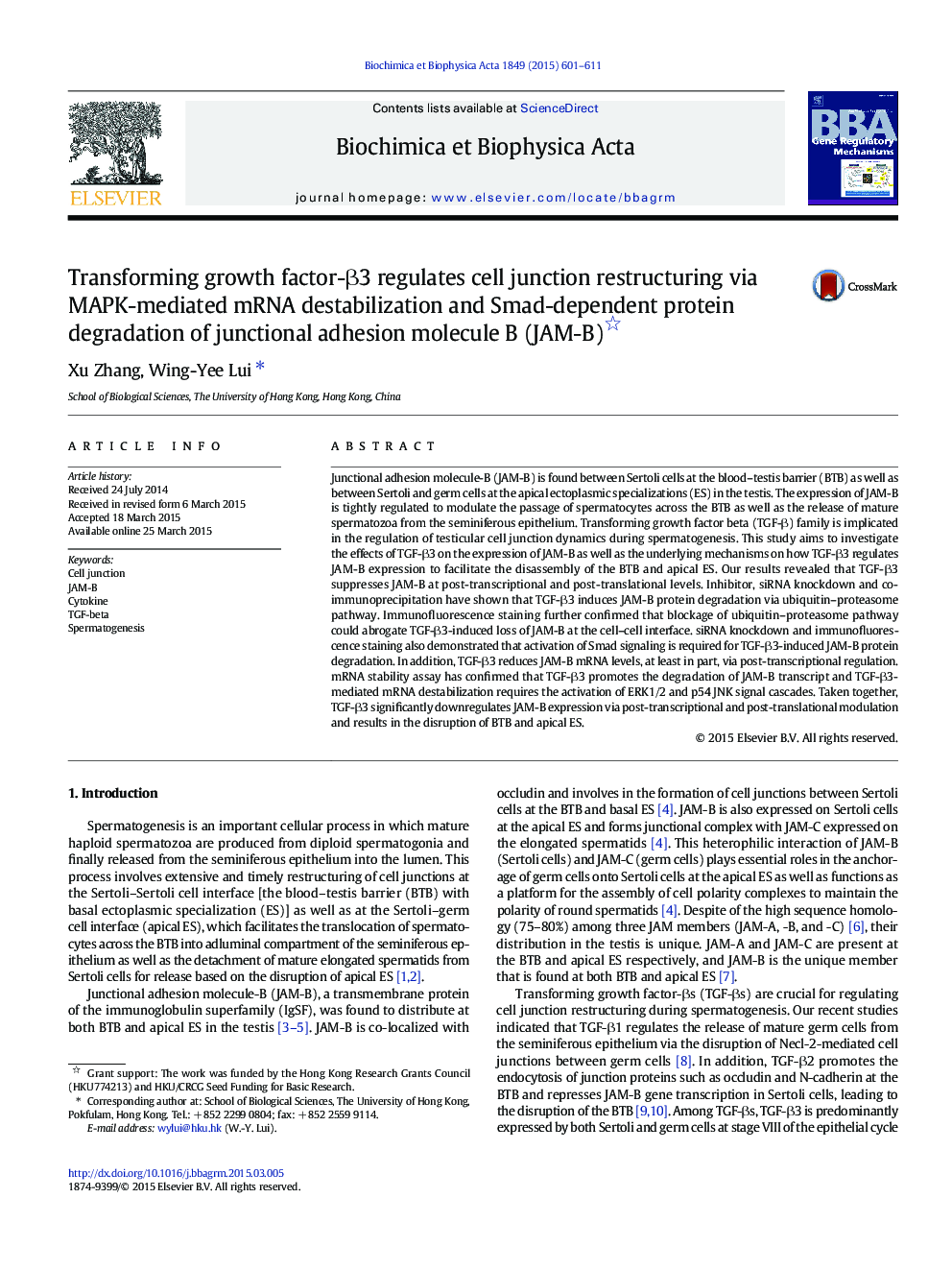| Article ID | Journal | Published Year | Pages | File Type |
|---|---|---|---|---|
| 10799093 | Biochimica et Biophysica Acta (BBA) - Gene Regulatory Mechanisms | 2015 | 11 Pages |
Abstract
Junctional adhesion molecule-B (JAM-B) is found between Sertoli cells at the blood-testis barrier (BTB) as well as between Sertoli and germ cells at the apical ectoplasmic specializations (ES) in the testis. The expression of JAM-B is tightly regulated to modulate the passage of spermatocytes across the BTB as well as the release of mature spermatozoa from the seminiferous epithelium. Transforming growth factor beta (TGF-β) family is implicated in the regulation of testicular cell junction dynamics during spermatogenesis. This study aims to investigate the effects of TGF-β3 on the expression of JAM-B as well as the underlying mechanisms on how TGF-β3 regulates JAM-B expression to facilitate the disassembly of the BTB and apical ES. Our results revealed that TGF-β3 suppresses JAM-B at post-transcriptional and post-translational levels. Inhibitor, siRNA knockdown and co-immunoprecipitation have shown that TGF-β3 induces JAM-B protein degradation via ubiquitin-proteasome pathway. Immunofluorescence staining further confirmed that blockage of ubiquitin-proteasome pathway could abrogate TGF-β3-induced loss of JAM-B at the cell-cell interface. siRNA knockdown and immunofluorescence staining also demonstrated that activation of Smad signaling is required for TGF-β3-induced JAM-B protein degradation. In addition, TGF-β3 reduces JAM-B mRNA levels, at least in part, via post-transcriptional regulation. mRNA stability assay has confirmed that TGF-β3 promotes the degradation of JAM-B transcript and TGF-β3-mediated mRNA destabilization requires the activation of ERK1/2 and p54 JNK signal cascades. Taken together, TGF-β3 significantly downregulates JAM-B expression via post-transcriptional and post-translational modulation and results in the disruption of BTB and apical ES.
Related Topics
Life Sciences
Biochemistry, Genetics and Molecular Biology
Biochemistry
Authors
Xu Zhang, Wing-Yee Lui,
